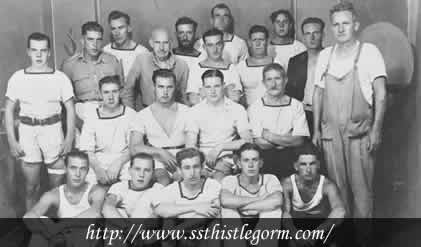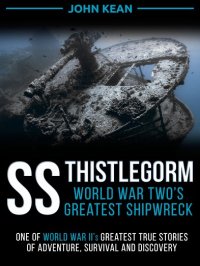The Book
January 1995
 In a darkened room in the north of England in 1995 sat freelance TV producer, Caroline Hawkins and retired Royal Navy gunner, Glyn Owen. Caroline was full of nervous anticipation. There was no telling how Glyn would react to revelations about an incident that happened in his life some 54 years previously. Old wounds would be opened. Bad memories long buried deep in the depths of the sub-conscious mind would now slowly surface. However, it wasn’t all bad, as after all, this was a chance to recount good stories too. Some were so spectacular that they were to be transcripted and recorded on film for time immemorial. Life at sea for a Merchant Navy seaman had its moments of excitement and adventure. The sailors were young, impressionable and a long way from home. Some would end their careers having had over six ships sunk beneath them. It wasn’t uncommon to be rescued from a torpedoed vessel only to be sunk again on the way home by more enemy action. There was going to be a great deal of talking today.
In a darkened room in the north of England in 1995 sat freelance TV producer, Caroline Hawkins and retired Royal Navy gunner, Glyn Owen. Caroline was full of nervous anticipation. There was no telling how Glyn would react to revelations about an incident that happened in his life some 54 years previously. Old wounds would be opened. Bad memories long buried deep in the depths of the sub-conscious mind would now slowly surface. However, it wasn’t all bad, as after all, this was a chance to recount good stories too. Some were so spectacular that they were to be transcripted and recorded on film for time immemorial. Life at sea for a Merchant Navy seaman had its moments of excitement and adventure. The sailors were young, impressionable and a long way from home. Some would end their careers having had over six ships sunk beneath them. It wasn’t uncommon to be rescued from a torpedoed vessel only to be sunk again on the way home by more enemy action. There was going to be a great deal of talking today.
For Caroline and her Associate Producer, Sally Lindsay the interview with Glyn was the result of many months work. If they weren’t diving the wreck four times a day, then they’d be trawling the archives of the public records office or maritime museums. On an average day they’d made at least fifty phone calls and sent or received over twenty mailings. A huge pile of paperwork containing ships plans, old photographs, newspaper cuttings, maritime maps and documents and a plethora of correspondence between naval and government agencies, occupied a whole room of Caroline’s house.
Today was crucial, for time was running out and although time had been good to the survivors, they were in their late seventies and this was possibly the last and only chance to find out what really happened so many years ago on the fateful night of 6th October 1941.
Glyn Owen sat pensively in the chair contemplating his first appearance on national television. It all looked very serious what with a cameraman, assistant, sound recordist and Caroline and Sally. They’d taken over Glyn’s small living room adding a plethora of cables, lighting stands and reflectors. They even had to black out his windows and move ornaments and furniture around.
All the interviewed survivors were strengthened by the chance to finally tell their story in their own words without fear of recrimination from the War Office or obligation of the Official Secrets Act. Quite simply, they’d served their time, done their duty and paid the price. Now it was time to put the record straight and let the world know the true facts.
“In your own time Glyn”, encouraged the director, as the camera began to roll. Despite the tension of a recorded interview, Glyn felt very relaxed. He was medium in height and had a full figure. It was time to tell the story.
“This is Tuesday 31st January 1995 – an interview with Glyn Owen. Glyn, can you remember when you joined SS Thistlegorm?”
Now, for the first time in print, is revealed the truth of these spectacular interviews in 1995 with the survivors of the Red Sea’s greatest wreck. Over fifty hours of footage and recordings were taken over a six-week period recording in great detail, word for word, the eye-witness accounts of the final days of this famous ship. John Kean’s SS Thistlegorm has gone further than any other book by delving deep into the past to reveal the hidden secrets of this sleeping legend.
This amazing story, spanning a period of over one hundred years, reads like a novel – except that all the dramatic events and experiences are true. Beginning in 1903 with the founding fathers of Thistle Ships, the journey through time takes us along Thistle’s turbulent history into WW2 and the fateful night of 6th October 1941 when SS Thistlegorm met its untimely end. There follows half a century of several verified eye witness accounts confirming what happened to the wreck during its wilderness years between Cousteau’s visit in 1955 and the present day. These startling revelations shatter the popular belief that Thistlegorm wasn’t rediscovered until 1991 by a group of recreational scuba divers.
“To get right to the heart of the truth I treated the story of Thistlegorm as something like a murder enquiry!” say’s author and Ocean College dive guide, Johh Kean. “In any crime, there’s a victim, a perpetrator and sometimes several witnesses. What I did was to find more witnesses and involved parties who had never been approached before, like survivors, the German air crew, the Bedouins who have never left the area and actually witnessed the attack themselves in Shab Aly sixty years ago. Sharmers too, were a great source of information. In a town with little media or public library to record key news events, it was clear that history is only recorded in the minds of those who actually made it or witnessed it. There’s more than a handful who have been in Sharm since its humble beginnings over twenty years ago and boy do they love to talk about it! I even tracked down the ship’s seven-foot radio mast and half a dozen interesting artefacts. They’ve all been photographed for the book.”
“Out of the blue one day came the icing on the cake – the Thistlegorm captain’s son, Ellis junior – alive and well and now living in England. He’d got wind of what I was up to and later agreed to write the foreword for the book. It’s a very moving tribute and a great reminder to divers to show respect and consideration for the wreck and those who died on it.”
I am privileged to have been the person lucky enough to finally tell the story before it disappeared forever with those who held the secrets. I thank them all for coming forward and giving their accounts.
John Kean Author of John Kean’s SS Thistlegorm
